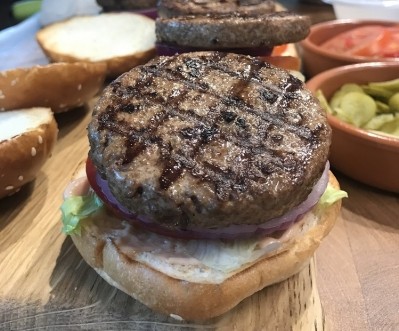Modified starch ‘ink’ developed for 3D printing: ‘They’re simple, cheap and easy to implement on an industrial scale’

3D printing is attractive to food manufacturers for a number of reasons: foods printed using this next-gen tech have the potential to suit consumer preferences in terms of taste, texture, cost, convenience, and nutrition.
The technology is predicted to play a key role in food personalisation going forward, whether it be via the customisation of shapes, textures, flavours or colours for demographics with particular needs, such as children and the elderly.
To advance progress in the 3D printed food world, researchers in Brazil and France have developed plant-based ‘inks’ they say can be used to build these products. The hydrogels are based on modified starch.
Cassava and wheat starch ‘ink’
Researchers from the University of São Paulo's Luiz de Queiroz College of Agriculture (ESALQ-USP) in Brazil, and colleagues from France’s Nantes Atlantic College of Veterinary Medicine, Food Science and Engineering (Oniris) and the National Institute for Research on Agriculture, Food and Environment (INRAE), developed different technologies to modify starch and obtain gels with ‘ideal characteristics’ for 3D printing.
The first gels produced by the team of international researchers were based on cassava starch, using ozone modify the starch’s structure and properties. The ozone was produced by applying an electrical discharge to oxygen, bubbled gas in a container with a mixture of water and cassava starch in suspension, and dried the mixture by removing the water.
By playing with this process, including ozone concentration, temperature and time, the researchers were able to make gels with different properties to find the right consistency for 3D printing.
“Control of the conditions enabled us to obtain weaker gels for other applications and firmer gels that are ideal for 3D printing because they retail the shape of the printed structure without flowing or losing moisture,” noted principal investigator and professor at ESALQ-USP Pedro Esteves Duarte Augusto.
Another method has also been developed by the researchers. This one involves dry heading cassava and wheat starch in an oven while controlling both temperature and time. This method enabled them to obtain gels that displayed ‘optimal printability’ – meaning that food can be printed layer-by-layer and maintain its structure.
“We obtained good results with both methods. They’re simple, cheap and easy to implement on an industrial scale,” said Augusto.
Potential for new ingredients
Next up, the research cohort plans to identify other methods of starch modification for the production of 3D printing gels, they revealed. ESALQ-USP has acquired a 3D printer, which the researchers will use to test structures developed with the new gels.
It has also been suggested that the gels based on modified cassava and wheat starch could be used to print things outside of the food sphere, such as drug capsules and nutraceuticals.
“We’ve demonstrated the feasibility of food production by 3D printing and fabrication of tailor-made ingredients,” said Augusto. “Now we plan to extend the applications and test other raw materials.”
Source: Food Research International
‘Dry heading treatment: A potential tool to improve the wheat starch properties for 3D food printing application’
Published online 22 September 2020
DOI: https://doi.org/10.1016/j.foodres.2020.109731
Authors: Bianca C. Maniglia, Damaris C. Lima, Manoelda Matta Junior, Anthony Oge, Patricia Le-Bai, Pedro E. D. Augusto, Alain Le-Bail
The research project was supported by FAPESP (São Paulo Research Foundation)

























